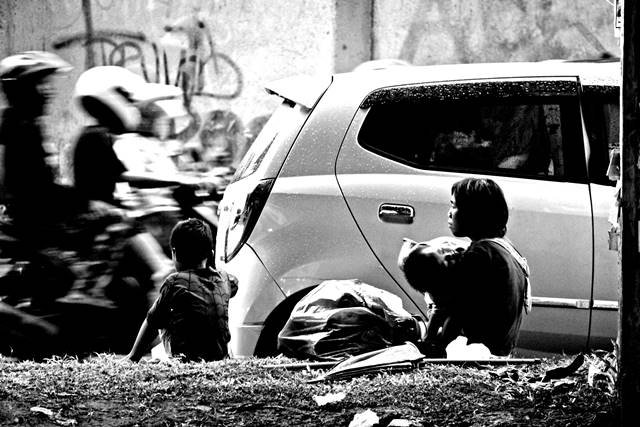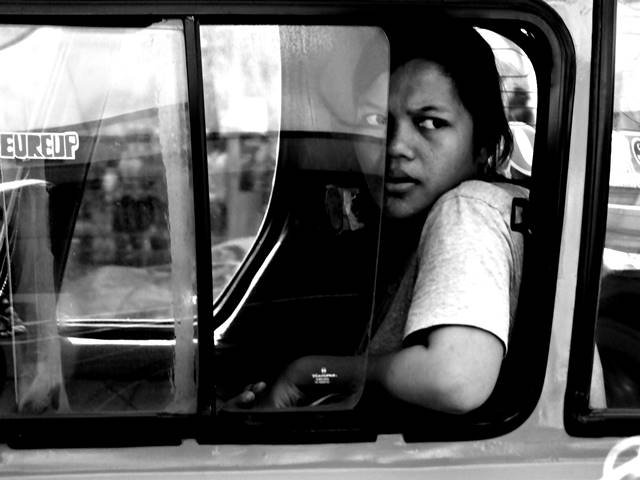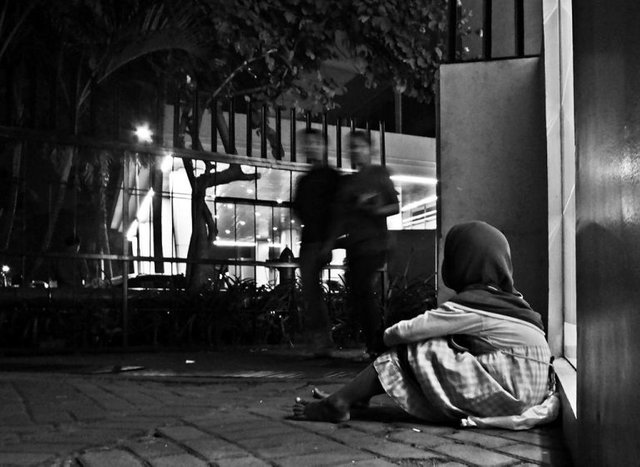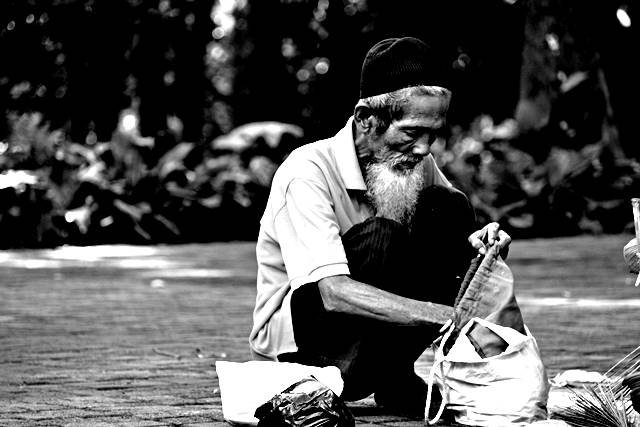Photography Human Interest: Photographing Human and Emotion of His Life
Photography Human Interest or in Indonesian translated as photography humanism is a "genre" that emphasizes on humans as its main object. Nevertheless, there are differences with other genres, a human interest photo will give more emphasis on the presence of "mood" or "atmosphere" or "emotion" in every portrait it produces.
The emphasis on the element of "mood" in each portrait makes it different from the genre of journalistic photography that emphasizes the element of events. Not infrequently human interest photos are included in other genres, street photography, since the majority of his photographs are also "picked up" from street life, but since not all street photography is human, humanistic photography is often considered a stand-alone part.
Therefore there is a quotation mark in the word "genre" in the above definition because human interest photography is often included in other genres mentioned above.
Photography Human Interest: Man and His Life
What's different about making human interest photos by shooting mature models? The subject is both human right?
Right. At the same time, the main subject is human.
However, there are basic differences that make it different.
Human interest photography presents humans in their daily lives in as natural a condition as possible. Humans who are at the core of a portrait often do not even realize that they are the target of the camera.
Very natural and natural.
Moreover, a human interest photograph is not always focused on the human, but also describes their lives, their reactions, their expression or their spontaneous actions in the face of a situation when portraits are made.
So, not just on the human. Elements of the environment and situations when the portrait is created will be an important element in it.
Aim for Attract Sympathy?
Could be and not entirely wrong, but also not entirely true.
Many provide additional explanations that human interest photography aims to attract the sympathy of those who see. Nothing wrong, because one way of displaying the "mood" or "atmosphere" in a photo is to include elements that can invite the "feel" in the viewing.
One such flavor is "sympathy" and "empathy".
Therefore, many photographers who take the subject or the object of images of those who are from the lower economic circles. However, compassion or sympathy is present in every human being and seeing those who are under the stress of life is the most common and easy way to get the attention of the viewer.
However, it is not always true.
Human interest photography is not just for sympathy. There is no limitation that a portrait should take the theme of the distress of the people and invite the tears of the beholder. A photograph of humanism can take the rich and successful objects and illustrate the luxuries it enjoys.
The important thing is to bring the "mood" in the resulting photo work.
Tips on Making Human Interest Photos
Looks easy, but actually making a human interest photo is not an easy matter. The main problem most often encountered is to bring the "mood" or "emotion" into the portrait.
There is never a "powerful" or right way to do it. Each photographer should keep trying and trying to do it. Trying to get the feeling and instincts honed with a lot going down the road is a liability.
Can not help it because human interest photography put forward the feeling that is present in the photographer than just applying various photography techniques.
Nevertheless, there are some tips that can be tried to increase the chances of producing a good human interest themed photos.
Many Reading the News
It looks unrelated, but since most photos of this "genre" are taken on the street, like street photography, knowledge of social themes in society can broaden the horizons.
For example, news in the newspaper or online media about street children, or the harshness of life on the streets of course can provide additional knowledge about what images can be roughly inviting attention if shown. Alternatively, the troublesome street hawkers problem can be translated in a related photo of their lives.
Viewing the Situation and the Environment
Human interest photography in many ways is not much different from street photography and most of its objects are in everyday life. Therefore, the photo hunting technique is not much different.
Jelly in search of objects and moments is a must. Sometimes waiting at one point is better than going on because it gives a photographer a chance to look around to find interesting things.
Cameras Must Be Ready for Action
Whether you want it or not. The moments on the street will not be repeated again. It all happens in seconds. In this case Henri Cartier Bresson's "decisive moment" principle applies.
The camera must be in standby at all times to avoid losing moments. Auto mode will be more advantageous in this case because human interest photography relies more on the power of "story" in portrait than the application of photography techniques.
Nevertheless, a seasoned photographer may still get an interesting photo even with manual mode though because of his skill in determining the right camera settings.
Profitable Zoom Lens
One of the criteria (though not absolute and difficult to prove) is the natural sifar alias is not artificial. Often it is constrained by the attitude of the object that turns stiff and unnatural when he knows himself in the lens shots.
That's why there should be enough distance between shooting with the object so that the presence of the camera does not affect the "game" behavior.
The use of zoom lens will be very beneficial because the distance can be maintained and the photographer can freely observe their objects without disturbing the activity.
Ask for permission
Sometimes, like or dislike many people who do not like the camera directed to him. Moreover, if the camera is brought DSLR, which for some reason often cause an uncomfortable reaction from the object.
Therefore, if it turns out after the shutter button is pressed and then the reaction of the object looks uncomfortable, it is worth considering to come to him and communicate directly. Explain the purpose of taking photos and showing the results.
In many cases, they ultimately understand and sometimes even engage in conversation (self-experience). Not infrequently even they are willing to be photographed again.
Feel free to ask permission if needed.
Separate the Main Object
One of the most frequently encountered difficulties on the streets is the overly crowded situation. Sometimes even though there is an interesting object, but the result is not maximal because many things are not necessary, especially the people passing by, present and disturb.
If faced with this, try different shooting angles so the target can be separated from a background that is too "noisy". Do not be silent and static, but try to get as much as possible the object can be completely focused without interruption.
Wear Bokeh
If it turns out to separate the object from a difficult background, blur the background and use the bokeh. That way the busy background can be "eliminated" and no longer interfere with the main target.
After all, blur the background will add the artistic value of a photo. Not a requirement, but it can be very helpful.
Select a Strong or Unique Character Object
Human interest photos often have to rely on the figure, especially if we want to make a portrait.
For that carefulness in choosing the character who became the main character is required. Look for "strong" or "unique" characters. Each taste will be different, so choose it based on your own taste.
There is no standard benchmark on this.
Focus On Face
Face is an area where a person's emotions will be displayed first. Emotion will create a mood.
Focusing the main idea of a photo on a person's face, can be very helpful in presenting elements of "mood" or "emotion".
Use White Black Photo
Not without reason, the use of black and white photos is very much found in street photography or human interest.
The "bleak" and full "mystery" nuance of this monochrome photo helps to bring the name "mood", especially if it is an idea of sorrow, trouble.
That's a little advice made based on my experience so far.
Not an absolute thing because photography is closer to art than exact science. For that we need to realize that almost nothing is rigid and can digebyah uyah apply to everyone. Each photographer must try to find his own way.
Additional advice, take your camera immediately and walk out. Try searching for the object and create your own version of human interest photos. It's better than just reading theory.
Good luck!




